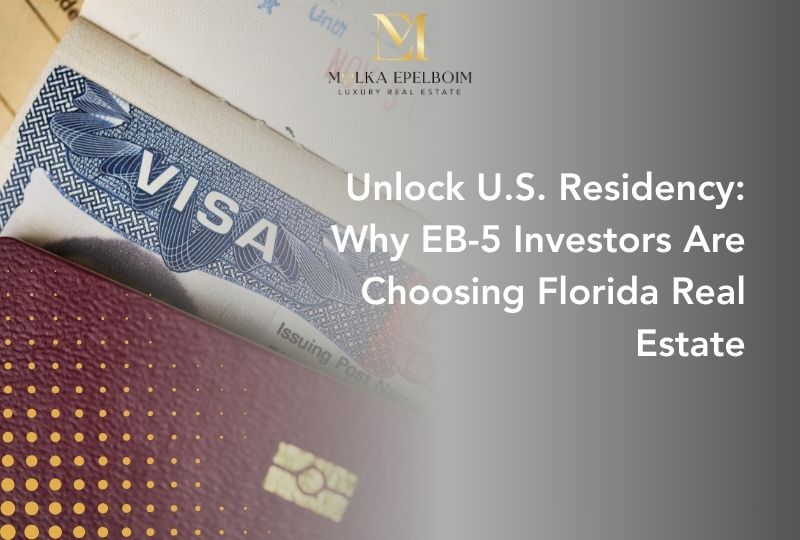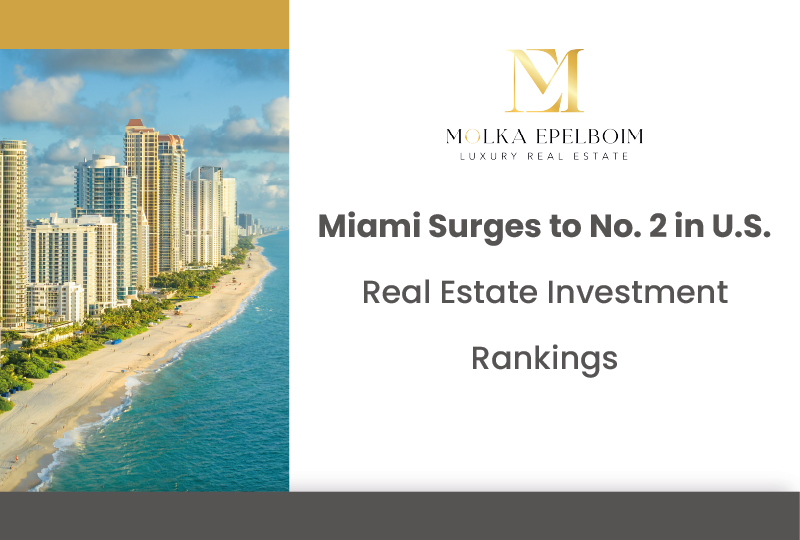
In recent years, Florida has emerged as a magnet for foreign investors seeking not only profitable real estate opportunities but also a pathway to U.S. residency. At the heart of this trend lies the EB-5 Immigrant Investor Program—a visa that offers a unique blend of immigration benefits and investment potential. But what exactly is the EB-5 visa, and why is Florida such a hotbed for these investments?
This article explores the mechanics of the EB-5 visa, the motivations driving foreign investors to pursue it, and why Florida stands out as a prime destination for EB-5-funded real estate ventures.
What Is the EB-5 Visa?
The EB-5 Immigrant Investor Program was created by the U.S. Congress in 1990 to stimulate the economy through foreign investment and job creation. It allows eligible foreign nationals to apply for a green card (permanent residency) by investing in a U.S.-based commercial enterprise.
Key Requirements:
Minimum Investment: $800,000 in a Targeted Employment Area (TEA) or $1,050,000 in a non-TEA.
Job Creation: The investment must create or preserve at least 10 full-time jobs for U.S. workers.
At-Risk Capital: The funds must be invested in a manner that involves risk, meaning there’s no guaranteed return.
Active Involvement: Investors must be involved in the management of the enterprise, either directly or through policy formulation.
Path to Residency:
Conditional Green Card: Granted initially for two years.
Permanent Residency: After proving job creation and investment compliance, the investor can apply to remove conditions.
Citizenship: Eligible after five years of permanent residency.

Why Are Foreign Investors Flocking to the EB-5 Visa?
The EB-5 visa is more than just a ticket to the U.S.—it’s a strategic move for high-net-worth individuals seeking global mobility, financial diversification, and long-term security.
1. Residency for the Whole Family
One of the most attractive features of the EB-5 visa is that it extends benefits to the investor’s immediate family—spouse and unmarried children under 21. This means access to U.S. education, healthcare, and the freedom to live and work anywhere in the country.
2. No Sponsorship Required
Unlike other visa categories, EB-5 does not require employer sponsorship or family ties. It’s a self-sponsored route, giving investors full control over their immigration journey.
3. Global Uncertainty and Political Stability
In regions facing political instability, economic volatility, or restrictive immigration policies, the EB-5 visa offers a stable and secure alternative. The U.S. remains a top destination for those seeking a safe haven for their families and assets.
4. Education Opportunities
Access to world-class universities and public schools is a major draw. Many EB-5 investors prioritize their children’s education, and permanent residency opens doors to in-state tuition and scholarships.
5. Business Expansion
For entrepreneurs and business owners, the EB-5 visa provides a platform to expand operations into the U.S. market, tap into new customer bases, and benefit from a robust legal and financial infrastructure.
Why Florida? The Sunshine State’s EB-5 Appeal
Florida isn’t just a vacation paradise—it’s a dynamic, fast-growing economy with a thriving real estate sector. Here’s why foreign investors are channeling their EB-5 funds into Florida:
1. Booming Real Estate Market
Florida’s real estate market has shown remarkable resilience and growth, especially in cities like Miami, Orlando, Tampa, and Fort Lauderdale. From luxury condos to mixed-use developments, the state offers diverse investment opportunities that align perfectly with EB-5 requirements.
Hot Investment Zones:

2. Targeted Employment Areas (TEAs)
Many parts of Florida qualify as TEAs, allowing investors to meet the lower $800,000 threshold. These areas are often in need of economic revitalization, making them ideal for EB-5 projects.
3. High Demand for Development
Florida’s population is growing rapidly, fueled by domestic migration and international interest. This creates a strong demand for housing, commercial spaces, and infrastructure—perfect conditions for EB-5-funded developments.
4. Tourism and Hospitality
Florida’s tourism industry is a powerhouse, attracting over 130 million visitors annually. EB-5 investors often fund hotels, resorts, and entertainment venues that benefit from this steady influx of tourists.
5. Cultural Diversity and International Connectivity
Florida is home to vibrant immigrant communities and boasts direct flight connections to Latin America, Europe, and Asia. This makes it easier for foreign investors to manage their assets and maintain ties with their home countries.
Real Estate Projects Funded by EB-5 in Florida
Several high-profile developments in Florida have been successfully funded through EB-5 capital. These projects not only meet the program’s job creation criteria but also contribute to the state’s economic growth.
Examples:
Miami Worldcenter: One of the largest urban developments in the U.S., combining retail, residential, and hospitality spaces.
Paramount Fort Lauderdale Beach: A luxury condo project that attracted EB-5 investors from Asia and Latin America.
Orlando’s I-Drive Resort Area: Multiple hotel and entertainment projects funded through EB-5, capitalizing on the city’s tourism boom.
These ventures demonstrate how EB-5 capital can be strategically deployed to fuel large-scale developments while securing immigration benefits for investors.
Risks and Considerations
While the EB-5 visa offers significant advantages, it’s not without risks. Investors should conduct thorough due diligence and seek professional guidance.
Key Considerations:
Project Viability: Ensure the enterprise has a solid business plan and realistic job creation projections.
Regional Center vs. Direct Investment: Regional centers offer pooled investments and indirect job creation, while direct investments require hands-on management.
Immigration Compliance: Failure to meet job creation or investment requirements can jeopardize the green card process.
Return on Investment: EB-5 projects are not guaranteed to yield high financial returns; the primary goal is immigration.
The Future of EB-5 in Florida
With ongoing reforms and increased transparency, the EB-5 program is becoming more investor-friendly. Florida’s continued economic expansion, infrastructure investments, and global appeal position it as a top destination for EB-5 capital.
As the U.S. tightens other immigration pathways, the EB-5 visa remains a golden ticket for those who can afford it—and Florida is the stage where many of these dreams are being built, brick by brick.
Conclusion
The EB-5 visa is more than an immigration tool—it’s a strategic investment in the future. For foreign investors, Florida offers the perfect blend of opportunity, lifestyle, and growth. From sun-soaked beaches to skyscrapers rising in Miami’s skyline, the Sunshine State is where global capital meets American ambition.
Whether you're a seasoned investor or exploring your first U.S. venture, Florida’s EB-5 real estate market is a gateway to prosperity—and a new beginning.
As of September 2025, the U.S. housing market is experiencing a pivotal moment. Mortgage rates, while higher than the historic lows of 2020–2021, have stabilized in the mid-6% range, offering a unique window for buyers and investors to act strategically. With the Federal Reserve signaling a softer monetary stance and inflation showing signs of easing, this environment presents both challenges and opportunities. Understanding the current mortgage landscape is essential for setting realistic expectations and making informed decisions.Current Mortgage Rate SnapshotAccording to Forbes Advisor, the average interest rate on a 30-year fixed mortgage is 6.32%, with an APR of 6.35%. This...
Miami has positioned itself as the second most attractive market in the United States for real estate investment in 2025, according to CBRE's 2025 Investment Intentions Survey. With a growing economy, an increasing population, and expanding infrastructure, this city remains a key destination for investors from around the world.Miami's Economic Boom: Foundation for Real Estate Growth1. An Expanding Economic CenterMiami's economic resurgence in 2025 is supported by key sectors, including:Finance and Banking: Miami has established itself as an international banking center with more than 1,400 financial firms operating in the city.Technology: Known as "Silicon Beach," Miami has experienced a 35%...

